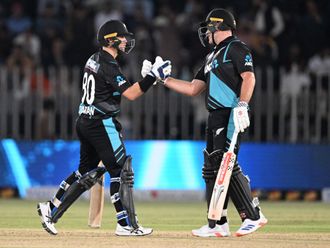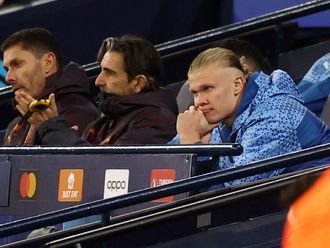This group of 15 England players are performing miles below their potential. They have too much talent to let Sri Lanka stroll to 310 while smoking a cigar. So, what is wrong? The culture of the England team and English cricket. Luckily we have a new chairman, Colin Graves, starting at the England and Wales Cricket Board in May. He has promised a blank canvas and a fresh start. It is a chance to move on from the past and is England’s time to freshen up the whole game. Bring in a vibrant English Premier League. Encourage strength, power and flexibility, with a freedom to play with a fearless approach. Embed the team with a culture of just having a go. In Test cricket, stubbornness is a good trait but, in one-day cricket, it has left England four or five steps behind other teams.
You might get bowled out for 170 playing that way for a little while but it will improve eventually and become the team’s natural style by the time we host the next World Cup in 2019. Graves will come in and start with no baggage. I do not think Kevin Pietersen walks back into the England set-up. No chance. He has to go and commit to a County and score a lot of runs.
There would then be a public outcry if England were struggling and still did not pick him. But there is a long way for him to go and the first thing Colin will do is say, “Right, let’s get English cricket moving forward and change”. He will look at absolutely everything, which is good because people will be on their toes.
I don’t think anyone will feel comfortable in that environment now. But the problems run deeper than Peter Moores and Paul Downton. Our stock of talent is just not strong enough. Why is that the case? We have all the facilities, the coaches, the player performance pathways and academy squads in place but, for some reason, we can’t produce fast bowlers or spinners.
We are pretty much the only team in the world that does not have a genuine fast bowler. Even India have Mohammad Shami now and he is bowling quicker than our guys. Chris Woakes has become our fastest bowler. How has that happened? Yes, we have problems with the coaching of the team because the players are not getting any better, but the system is not producing the talent we need.
I do not judge England’s seam bowlers against Mitchell Starc or Trent Boult. We have not got their pace. But I judge them against someone such as Tim Southee. He is an English-style seam bowler and he is moving the ball. Why are we not moving the ball? It must be length. It can’t be the batch of balls.
Where are the spinners? Why have we not got a left-armer or any variation in this World Cup when we have had four years to plan? We have no alternative to right-arm 84mph seam bowlers and an off-spinner. It is an attack that resembles a bowling machine. Why do we continuously bowl short? We try this aggressive approach but we have not got the 90mph bowlers who can hit people on the head and strike fear into the opposition.
Why did Stuart Broad come on in the batting powerplay against Sri Lanka, with fine leg up in the circle, and bowl short at Kumar Sangakkara, who simply flicked it over his head for six? It must be down to mentality or a lack of rhythm or confidence. It drives me nuts when I hear after every game that England say they are flexible.
No, you are not. A team like Sri Lanka is flexible. They had Mahela Jayawardene waiting with his helmet on to go in at No. 4 but, when the powerplay came, who was ready to bat next? Not Jayawardene but Dinesh Chandimal. They had a plan that if it was a batting powerplay they would send in Chandimal. He is their powerplay expert.
When do we do anything like that? It never happens. We are predictable. If I was managing a team to play against England, I could sum up the opposition in two minutes and guarantee exactly what is going to come our way.
But I bet England’s team meetings are taking for ever because you are never too sure what the opposition is going to throw at you with bowling changes, field settings or the batting line-up. With England, you know the batting order and bowling plans are set in stone. It is so predictable I am bored of talking about it or watching it. It has been England’s tactic for three or four years to go for a par score. I do not think other teams look at it like that. They just go for it. Bat long, stay in and keep aiming for boundary zones.
We have players who can do that but they are being stifled. One is Jos Buttler. England have to bat him as high as possible. His best innings for England was when they had a collapse against Sri Lanka at Lord’s and he had time to bat. He scored a brilliant hundred, which was immediately followed by Alastair Cook dampening the mood by saying he was not ready for Test cricket.
There you go again — always look at the negative, not the positive. Sri Lanka must be cracking themselves with laughter. Alex Hales scored a hundred against them playing conventionally in a Twenty20 game but he was not in the team.
James Taylor played brilliantly at No. 3 in Sri Lanka but came in at six. Then Buttler, who whacked them for a hundred at Lord’s, and is a player they fear and will have spoken about more than any other, came in and faced just 19 balls.
Name me any other team in the world that would treat a player the way we have dealt with Hales? He smashes a top Sri Lanka attack around, wins the game in a T20 World Cup match but then is not given a run opening the batting in 50-over cricket. Culturally, we have to change that mentality or we will be making the same mistakes at the next World Cup and beyond.
— The Telegraph Group Limited, London 2015












